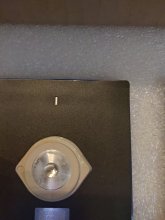I just got here via searching "Battery Internal Resistance", wondering how to measure such. etc.. I just ordered a 2nd set of 8 280Ah LiFePO4 cells. I am wondering if it worth the effort to get a good meter and measure the internal resistance of my LiFePO4 cells when I receive them, in addition to somehow measuring their Ah capacity? Any feedback on that question would be interesting to me :+) ... P.S. I notice my Chagery BMS8T shows internal resistance of each cell, but these figures change with the variety of amps in and out; and I think such meausrement umbers are not a reliable way of getting an internal resistance figure except maybe for ... if one below par cell is way different than all the other cells.
What is the application? If we are talking less than 0.5C max, and average under 0.2C, I wouldn't even bother. Instead, once you get the pack built and balanced, put a good load on it, and measure each cells voltage. If you see a big difference, you would then start investigating.



